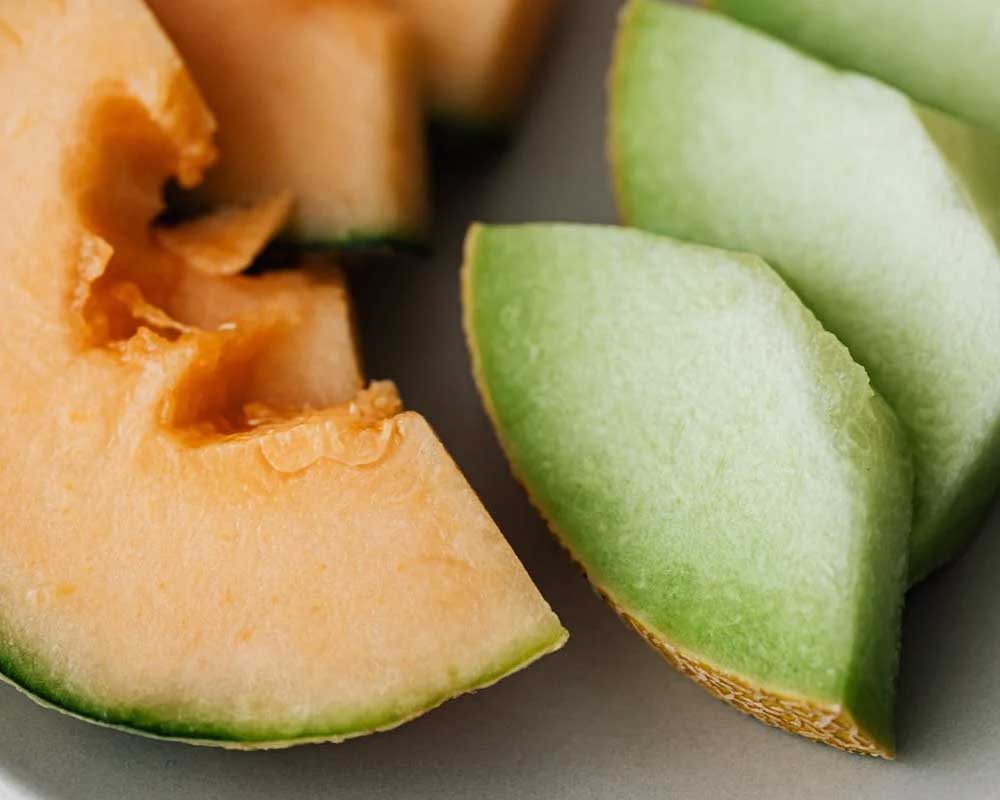
Honeydew: 10 Benefits + How to Choose a Ripe Melon
Imagine sinking your teeth into a juicy, honey-sweet slice of melon on a scorching summer day – that’s the magic of honeydew. These fruits, with their delicate fragrance and lush, pale-green flesh, have a way of brightening up even the dullest moments.

The Nutritional Powerhouse: Hone-ydew
Honeydew melons, also known as Cucumis melo var. inodorus, belong to the gourd family. Beneath their smooth skin lies a nutritional powerhouse that’s low in calories but high in essential nutrients.
Health Benefits of Honeydew
Rich in Hydration and Fiber
Honeydew’s high water content makes it an excellent choice for staying hydrated, especially during hot weather. Additionally, the fiber content aids in digestion and promotes a healthy gut.
Packed with Essential Vitamins
Loaded with vitamins like vitamin C, B vitamins, and folate, honey-dew contributes to a robust immune system, promotes healthy skin, and supports overall well-being.
Aids Digestion and Weight Management
The combination of water and dietary fiber in honey-dew supports digestion and helps manage weight by enhancing feelings of fullness.
Antioxidant Goodness and Skin Health
The presence of antioxidants like vitamin C and beta-carotene in honey-dew contributes to a radiant complexion and helps combat oxidative stress.
Selecting the Sweetest Honeydew
Check the Skin Color and Texture
A ripe honey-dew should have a creamy yellow undertone and a slightly waxy texture. Avoid melons with bruises or overly soft spots.
Give it a Gentle Thump
Gently thump the honey-dew – a deep, resonant sound indicates ripeness.
Inspect the Blossom End
The blossom end of a ripe honey-dew will yield slightly when pressed.
Preparing and Serving Honey-dew
Sliced Perfection: A Simple Snack
Slice the honey-dew into wedges and savor its natural sweetness as a refreshing snack.
Honeydew in Refreshing Salads
Add chunks of honey-dew to your favorite salads for an extra burst of flavor and juiciness.
Honeydew Smoothies: A Tropical Twist
Blend honey-dew with yogurt, mint, and a touch of honey for a tropical and revitalizing smoothie.
Creative Culinary Uses
Grilled Honeydew Skewers
Thread honey-dew chunks onto skewers, grill them lightly, and enjoy the caramelized goodness.
Honeydew Sorbet Sensation
Freeze honey-dew chunks and blend them into a velvety sorbet for a guilt-free dessert.
FAQs (Frequently Asked Questions)
1. Can you eat honey-dew seeds?
Yes, honeydew seeds are safe to eat and can add a bit of crunch to your dishes.
2. What is the best time to enjoy honeydew?
Honey-dew is best enjoyed during its peak season, which spans from late spring to early fall.
3. Is honeydew suitable for individuals with diabetes?
Honey-dew’s low glycemic index makes it a suitable option for individuals with diabetes, but moderation is key.
4. Can I incorporate honeydew into savory dishes?
Absolutely! Honey-dew’s subtle sweetness can complement the flavors of savory dishes like salads and grilled meats.
5. How do I store a partially used honey-dew?
Wrap the exposed portion in plastic wrap and refrigerate it – this helps preserve its freshness.
Conclusion
Incorporating honeydew into your diet isn’t just about indulging in its sumptuous taste; it’s about embracing a wealth of nutrients and benefits that contribute to your overall well-being. So, the next time you’re at the market, don’t hesitate to pick up a ripe honey-dew and experience its refreshing magic.
Read More
Mango Nutrition: Tropical Fruit for Helping With Blood Sugar & Brain Health
Riboflavin (Vitamin B2) Benefits: Preventing Headaches, Heart Health & More
Plum Benefits Your Digestion & Cardiovascular Health
Pineapple: A Tropical Delight Packed with Whole-Body Benefits
Water Chestnuts: Your Natural Pathway to Weight Management, Immunity, and Digestive Wellness
Peach Nutrition: Heart-Healthy, Gut-Friendly and Downright Delicious
Honeydew: 10 Benefits + How to Choose a Ripe Melon
Cantaloupe Nutrition: The Phytonutrient Powerhouse You May Be Overlooking
